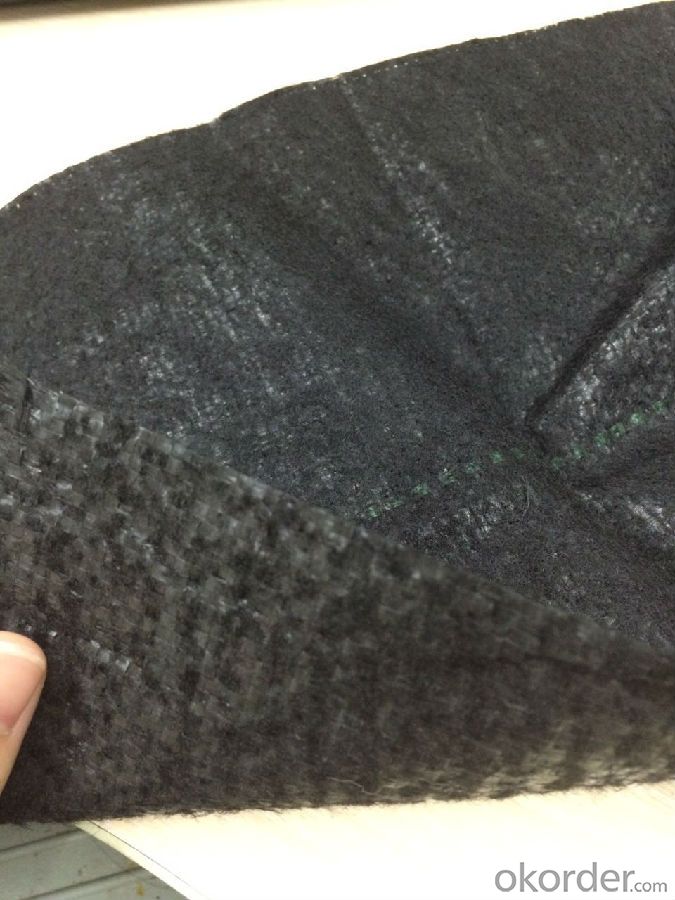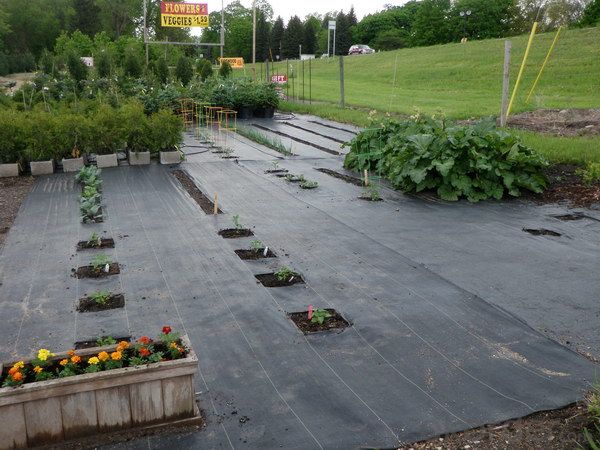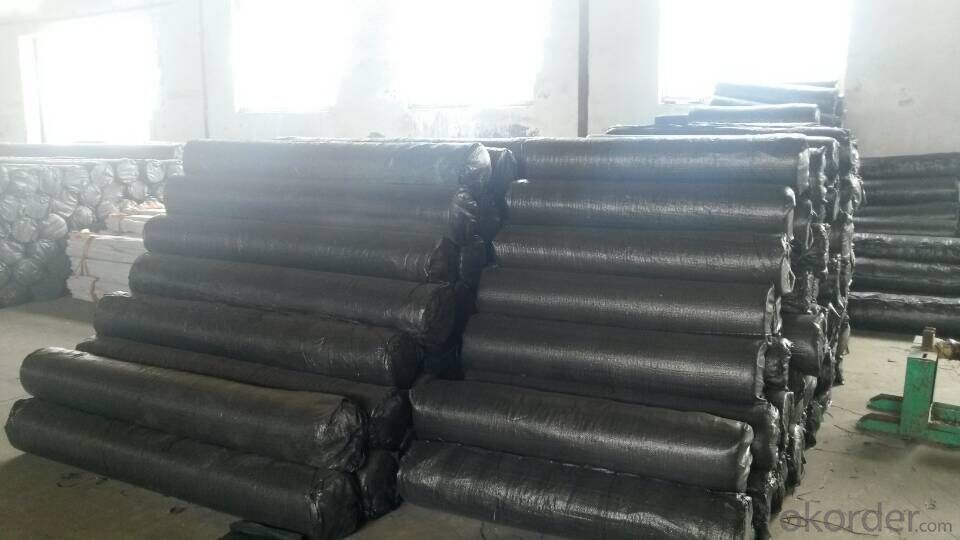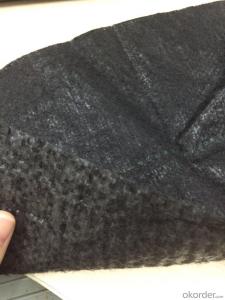Silt Fence with Pocket & Wooden Stake/ Polypropylene Fabric
- Loading Port:
- China main port
- Payment Terms:
- TT OR LC
- Min Order Qty:
- 5000 roll
- Supply Capability:
- 100000 roll/month
OKorder Service Pledge
OKorder Financial Service
You Might Also Like
1. Production Introduction
Polypropylene fabric is made of environmentally friendly raw materials, pp spunbond nonwoven fabric. It used to prevent the growth of weed, without the use of potentially dangerous chemical sprays or labor intensive hoeing. Once installed, weed mat will continue providing protection for years without maintenance.




2. Production Feature:
1. Weed suppressant and drainage control landscaping fabric
2. Spun bonded non-woven fabric – will not fray when cut
3. Easy to use
4. Environmentally friendly
5. Allows water, air and nutrients through, suppressing weeds without the use of chemicals
6. Good alternative to Plantex® where cost is a factor
7. UV Stabilised
8. Reduces the level of watering required due to the slower rate of water evaporation
3. Production Function:
1. Cover crops in the ground surface,prevent weeds and against the insect
2. Controlling soil humidity and the temperature
3. Does not affect the growth of the crops
4. Protects plants from harmfully solar radiation
5. Air permeability, water permeability help crops growth.
6. Mothproof, eco-friendly, breathable, anti-bacteria, tear-resistant, fusible
4. Production Applications:
1. Weed block for landscaped garden beds
2. Permeable liners for planters (stops soil erosion)
3. Weed control under wooden decking
4. Geotextile for separating aggregate / soils under walkway blocks or bricks
5. Assists in preventing paving from settling unevenly
6. Landscape fabric prevents soil erosion
5. FAQ:
Q1: What is your minimum order quantity?
A:The minimum order quantity is 5000 ,but it is negotiable.
Q2:What is your payment terms?
A: T/T,Western Union,Paypal,L/C...
Q3:What is your delivery time?
A:Production time usually costs 2-20 days.
Waiting to cooperate with you!
- Q:How do geotextiles help with reinforcement of embankments?
- Geotextiles help with the reinforcement of embankments by providing stability, preventing soil erosion, and improving overall durability. They act as a barrier between soil layers, distributing loads and reducing the risk of settlement or slope failure. Additionally, geotextiles allow for better drainage, reducing the buildup of water pressure behind the embankment and minimizing the possibility of landslides.
- Q:How do geotextiles help with soil stabilization in foundation construction?
- Geotextiles aid in soil stabilization during foundation construction by acting as a barrier between the soil layers. They distribute loads more evenly, preventing differential settlement and improving the overall stability of the foundation. Additionally, geotextiles help to control erosion and filter water, allowing for proper drainage and reducing the risk of soil erosion.
- Q:What are the key properties to consider when evaluating geotextiles?
- When evaluating geotextiles, key properties to consider include strength, permeability, durability, and compatibility with the surrounding environment.
- Q:Can geotextiles be used in bridge abutment reinforcement?
- Yes, geotextiles can be used in bridge abutment reinforcement. Geotextiles are commonly used in civil engineering applications to enhance the stability, strength, and durability of various structures, including bridge abutments. They can provide soil confinement, prevent erosion, and improve the overall performance of the abutment by distributing loads and reducing settlement.
- Q:How are geotextiles manufactured?
- Geotextiles are manufactured through a variety of processes involving synthetic fibers such as polyester or polypropylene. These fibers are first extruded into long filaments or spun into yarns. Then, they are woven or non-woven into a fabric-like structure using specialized machinery. The resulting geotextiles can be further treated with additives for increased durability or specific functionalities.
- Q:How many meters from the river pipe trench construction using geotextile reinforcement
- River slope protection, etc. can use my professional production of geotextile products. Thank you
- Q:Are geotextiles resistant to fire damage?
- Yes, geotextiles can be resistant to fire damage. Many geotextiles are specifically designed to have fire-resistant properties, which help prevent them from igniting or spreading flames. However, it is important to note that the level of fire resistance may vary depending on the specific type and composition of the geotextile.
- Q:How do geotextiles help in reinforcing soil?
- Geotextiles help in reinforcing soil by providing stability and strength to the soil structure. They act as a barrier, preventing soil erosion and enhancing the load-bearing capacity of the soil. Geotextiles distribute the applied loads evenly, reducing the stress and strain on the soil. Additionally, they allow water to drain freely, preventing water accumulation and maintaining the soil's integrity. Overall, geotextiles play a crucial role in reinforcing soil, improving its overall performance and longevity.
- Q:Engineering geotextile non-woven fabrics where the cheapest can buy, where the wholesale market?
- Hello, I am a geotextile manufacturer, quality assurance geotextile, cost-effective, logistics benefits.
- Q:Can geotextiles be used in coastal reclamation projects?
- Yes, geotextiles can be used in coastal reclamation projects. Geotextiles are commonly used to stabilize soil and prevent erosion, making them an effective solution in coastal areas where erosion is a significant concern. These textiles can help to trap sediment, control water flow, and provide stability to newly reclaimed land, making them a valuable tool in coastal reclamation projects.
1. Manufacturer Overview |
|
|---|---|
| Location | |
| Year Established | |
| Annual Output Value | |
| Main Markets | |
| Company Certifications | |
2. Manufacturer Certificates |
|
|---|---|
| a) Certification Name | |
| Range | |
| Reference | |
| Validity Period | |
3. Manufacturer Capability |
|
|---|---|
| a)Trade Capacity | |
| Nearest Port | |
| Export Percentage | |
| No.of Employees in Trade Department | |
| Language Spoken: | |
| b)Factory Information | |
| Factory Size: | |
| No. of Production Lines | |
| Contract Manufacturing | |
| Product Price Range | |
Send your message to us
Silt Fence with Pocket & Wooden Stake/ Polypropylene Fabric
- Loading Port:
- China main port
- Payment Terms:
- TT OR LC
- Min Order Qty:
- 5000 roll
- Supply Capability:
- 100000 roll/month
OKorder Service Pledge
OKorder Financial Service
Similar products
New products
Hot products
Related keywords
































